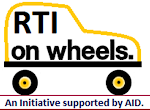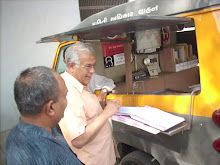Deccan Herald: Bangalore: Monday, May 21, 2012.
It is almost seven years since the revolutionary RTI Act came into existence (on June 15, 2005). But a majority of people in Karnataka only know the bare minimum about the law - it helps extract information and access authentic records from government departments.
Most of them do not know how and where to file an RTI application and what to do next when a public information officer sits on the application even after the stipulated 30 days to give information.
For instance, Samyudita, an engineering student, said: “All that I know about RTI is that we can demand from the government an account of its various activities, plans and money drawn from public funds.”
Madhavi Sharma, a housewife, said: “Though I’ve heard that RTI can be used to extract information from the government, I’m not sure how to go about it.”
RTI activist Vikram Simha claimed that only a lakh people in the State had exercised their right to information. His claim was based on a recent survey by an organisation of chartered accountants.
Simha said: “A majority of these one lakh people comprises the elite and literate sections of society. In most cases, information was not provided till one year since filing the applications.”
But, the Karnataka Information Commission (KIC) attributed the delay in clearing to the huge number of applications and the non-availability of courts to conduct the proceedings.
In 2011-12 alone, around 29,000 applications were submitted to KIC, of which only 15,000 have been disposed of till date. The delay in furnishing information may also be attributed to non-payment of the full fees, he said.
There are around 75,000 public information officers (PIOs) across the State to provide information to the applicants. If providing information is delayed for 30 days, a first appeal can be filed before the officer, senior in rank to the PIO in the Public authority concerned, within the next 30 days.
The second and third appeals can be filed at the higher levels, which involves court proceedings.
As per a recent survey conducted by CIVIC Bangalore, an NGO, on the use of RTI as a source of information by journalists of four prominent English dailies - The Hindu, Times of India, Deccan Herald and The New Indian Express - Deccan Herald was found to be the newspaper with the maximum number of articles (79) involving RTI. Katyayini Chamaraj, Executive Trustee of CIVIC, feels the media is shying away from making people aware of this law.
She said: “Reporters write articles for which the data comes from easy sources like a workshop, seminar or function or the rulings of the KIC (which are provided usually at a press briefing).
Compared to the thousands of RTI applications filed and followed-up by applicants, the success or failure stories that make it to the media are very few. The few stories that appear are due to the efforts of RTI applicants to reach out to reporters and convey the case in a simple manner. Many significant cases don’t make it to the media.”
The basic objective of RTI Act was to empower the citizens, promote transparency and accountability in the working of the government departments, contain corruption and make democracy work for the people.
However, the greater challenge was the actual implementation of the Act and there seems to be a long way to go. Making the masses aware about utilising RTI Act is key in ensuring its effective implementation, which is where the government has failed. The huge backlog of cases at KIC is another big challenge.














































































